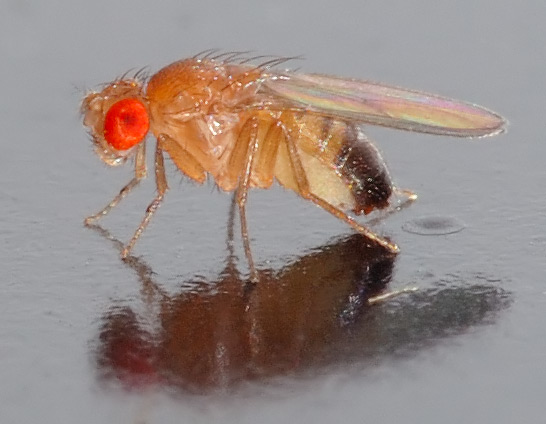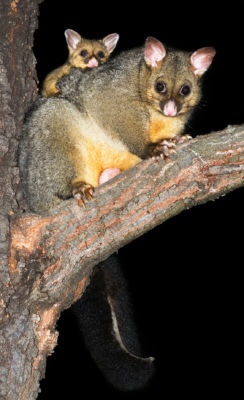It’s called the Trojan Female Technique and it’s involves a mutation in females that makes all their male offspring infertile. Because it is a gene, not a virus, it stays within that particular species and is spread from one generation to the next by breeding, not by disease.
It has the potential to wipe out populations – and is, perhaps, the ultimate in humane pest control. No other species is affected. No individual animal gets shot, trapped or poisoned. The affected males simply fail to produce offspring. Meanwhile an increasing number of fertile Trojan females (and infertile males) are born from matings between the target population’s remaining fertile males and the females which carry the Trojan gene, continuing and expanding the process.
So how does it work and where is the science at currently? Could the Trojan Female Technique be applied to possum eradication? Would such a solution be acceptable to New Zealanders? These are just some of the questions currently being investigated by researchers around the world, including New Zealand scientists.

There are, to date, no Trojan possums – but the Trojan technique and its effect on population genetics and dynamics has been investigated with fruitflies. Fruitflies breed very quickly, multiple generations can be studies over a short amount of time and their genetics is well studied. What’s more – a Trojan gene specific to fruitflies has been identified. So studying fruitflies is a way to better understand what might happen if/when a Trojan gene is identified in possums or other pest species.
D.K. Dowling (School of Biological Sciences, Monash University, Australia ) D.M. Tompkins (Landcare Research, Dunedin) and N.J. Gemmell (Allan Wilson Centre for Molecular Ecology and Evolution, Department of Anatomy, University of Otago) recently published the results of their study of the Trojan female technique as it applied to fruitflies, in the journal Evolutionary Applications. Their study showed that the Trojan gene remained stable and effective within a crossbreeding fruitfly population over time and multiple generations.
The full article is freely available:
The Trojan Female Technique for pest control: a candidate mitochondrial mutation confers low male fertility across diverse nuclear backgrounds in Drosophila melanogaster (2015)

Genes carried in mitochondrial DNA have been identified in mice and hares as well as the much-studied fruitfly – so it is feasible that they may one day be discovered in possums. Once such a gene is identified – how might females carrying that gene best be used to reduce the possum population? Is eradication of possums using Trojan females a realistic possibility?
An article by Neil Gemmell et al, published by the Royal Society used mathematical modelling to study how the Trojan female technique might work for continuous, self-sustaining biological control of a pest species. The researchers sought to answer three fundamental questions:
(i) What magnitude of population-scale impact could this technology theoretically have?
(ii) Under what circumstances, and over what time scale, could such impacts occur?
(iii) What general life-history characteristics might make pest species more or less amenable to population control using such technology?
The researchers concluded that their mathematical model demonstrates that mitochondrial DNA mutations that affect male, but not female reproductive fitness do have potential as biological control agents for pests. The model predicted population-scale impacts in relatively short time frames.
“We find that the TFT has the greatest efficacy when applied to species with high turnover rates with only a slight influence of generation time… We also find that single releases of TFs can provide effective reductions in population sizes when such releases are relatively large (10% of the total population), but the effectiveness of single releases drops when the proportion of mutant females is lower (1%). However, multiple releases of smaller numbers of TFs (1% of the total population) can provide effective and persistent control within a relatively small number of generations. In addition, the additive nature of multiple TFT releases enables high levels of predicted suppression to be achieved even when single releases have limited impact owing to less optimal life-history parameters and/or social structures.”
An additional advantage of Trojan Female Technique is that when breeding Trojan females for release, the sterile males produced as a by-product of this process can also be released and will, indeed, improve the population control process. There is no costly, time-consuming and ethically challenging process of identifying the required sex and discarding the other, unwanted sex (as is the case with some other ‘sterile male’ biological control methods).
The full article is published in Proceedings of the Royal Society and is freely available:
The Trojan female technique: a novel, effective and humane approach for pest population control (2013)
So currently the mutant genes exist in other species (fruitflies, mice, hares). Mathematical modelling suggests that once a suitable mutant gene is found in a pest species (eg possums), the Trojan Female Technique has good potential as a control method. But how are New Zealanders likely to feel about this method of predator control
A social acceptability report on the response of a sample of New Zealanders to the Trojan Female Technique is available on Landcare Research’s website. The report reveals that, while some respondents were excited by the possibilities of this new control method, others were more cautious. There was also some misapprehension and misunderstanding of how the Trojan Female Technique worked and the report concluded that a comprehensive, straightforward and truthful public communications programme would be needed to make the control method acceptable to the general public.
The full social acceptability report is freely available:
Social acceptability of the Trojan Female Technique for biological control of pests (2014) (PDF, 767KB)

